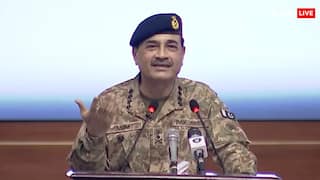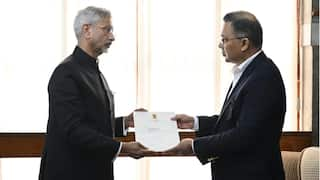From Early Satellites to Moon Mission And Future Human Spaceflight, How ISRO Has Shaped India’s Space Programme
In the years since Independence, India has made major strides in its space programme, spearheaded by the Indian Space Research Organisation (ISRO).

In the years since Independence, India has made major strides in its space programme, spearheaded by the Indian Space Research Organisation (ISRO). From its earliest satellites to upcoming missions, we look at the evolution of ISRO and its space programme.
The Early Years
Space research activities were initiated in India during the early 1960s. In 1962, the Indian National Committee for Space Research (INCOSPAR) was set up under the Department of Atomic Energy, to spearhead space research activities.
The American satellite 'Syncom-3' conducted live transmission of the 1964 Tokyo Olympics, demonstrating the power of communication satellites. Seeing this, Dr Vikram Sarabhai, the Father of the Indian space programme, recognised the benefits of space technologies for India.
In August 1969, ISRO was established in place of INCOSPAR. In the initial stages, St Mary Magdalene Church in the fishing village of Thumba in Thiruvananthapuram, Kerala, served as the main office for scientists.
The Indian space programme had three distinct elements — satellites for communication and remote sensing, the space transportation system, and application programmes. The satellite programme began on April 19, 1975, with the launch of India's first experimental satellite Aryabhatta. Launched using a Soviet launcher, Aryabhatta was placed in low-Earth orbit. The satellite carried out communication with ground stations in the very high frequency (VHF) range.
During 1975-1976, an experiment called the Satellite Instructional Television Experiment (SITE) was conducted under the Indian space programme. SITE benefitted around 200,000 people, covering 2,400 villages of six states and transmitted development-oriented programmes using the American Technology Satellite (ATS-6).
Based on the lessons learnt from the experiment, the Indian space agency launched its first dedicated communication satellite, the Ariane Passenger Payload Experiment (APPLE). This was an experimental satellite successfully launched by Ariane-1, from Kourou, French Guiana, on June 19, 1981. APPLE became the forerunner for future communication satellite systems.
Since then, ISRO has designed and developed satellites for a wide variety of applications, such as communication, meteorology, Earth observation, space science, and navigation. Other important feats accomplished by ISRO include the Rohini Series, INSAT and GSAT Series, EDUSAT, HAMSAT, Bhaskara-1, Resourcesat Series, Cartosat Series, Kalpana-1, Oceansat-1, Earth Observation Satellite Series, Indian Regional Navigation Satellite System, Space Recovery Experiment Satellite, SARAL, Chandrayaan-1, Mars Orbiter Mission (MOM), AstroSat, and Chandrayaan-2.
The Chandrayaan missions are a series of lunar space probes. Chandrayaan-1 operated in 2008-09. It mapped the Moon in various wavelengths of light from lunar orbit.
Chandrayaan-2 launched on July 22, 2019. The spacecraft consisted of an orbiter, a lander, and a rover. While the lander, called Vikram, failed to make the desired smooth landing, the other aspects of the mission were successful.
Future Missions
ISRO is working on future satellite missions like Aditya L-1, Chandrayaan-3 mission, Gaganyaan mission, Venus Orbiter Mission, and NISAR mission, among others. Aditya L-1 is a planned coronagraphy spacecraft to study the solar atmosphere.
Chandrayaan-3 is a planned third lunar exploration mission by ISRO, and will be a mission repeat of Chandrayaan-2. However, it will not have an orbiter.
The Gaganyaan Programme aims to demonstrate indigenous capability to undertake human spaceflight missions to low-Earth orbit. Three flights will be sent into low-Earth orbit under the Gaganyaan Programme. These include two unmanned flights and one human spaceflight.
The upcoming missions will enhance the technological capabilities of the nation and will make a significant contribution to scientific research and development.
Related Video
Southern Rising Summit 2024: How Important is Self-Awareness? Insights from Anu Aacharya | ABP LIVE






































